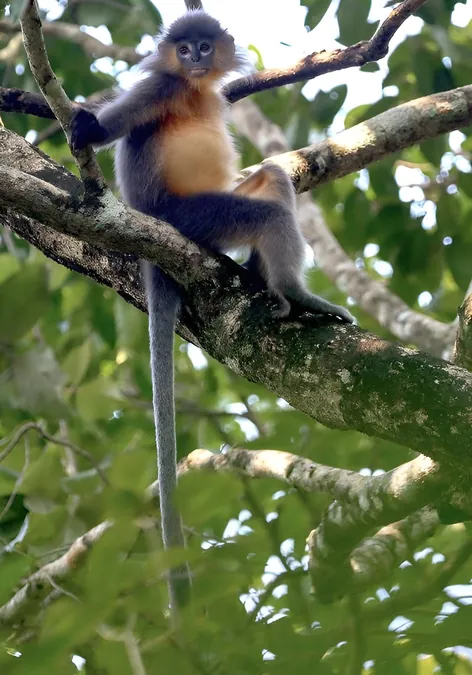
Urgent Warning: Forest Loss Sparks Genetic Crisis Among Endangered Langurs in Bangladesh
2024-09-27
Groundbreaking Study Reveals Troubling Fate for Endangered Primates
A groundbreaking study has revealed a troubling fate for two endangered primate species in Bangladesh: Phayre's langurs (Trachypithecus phayrei) and capped langurs (Trachypithecus pileatus). Research conducted over five years indicates that these two species are interbreeding, creating hybrids that may threaten their existence.
Research Overview
Published in the International Journal of Primatology, this study involved an international team led by Tanvir Ahmed, a Ph.D. student at the German Primate Center. Over the span of the study from 2018 to 2023, the team examined 98 langur groups in northeastern Bangladesh. Alarmingly, they discovered that 8 of these groups contained mixed populations of Phayre's and capped langurs, and in three groups, individuals appeared to exhibit characteristics of both species.
Genetic Findings
Genetic samples taken from these unique hybrids confirmed their mixed lineage, revealing one case where a capped langur mother and a Phayre's langur father produced offspring. Notably, one female hybrid demonstrated signs of fertility, raising concerns about ongoing genetic mixing between the two dwindling populations. 'The existence of fertile hybrids is particularly alarming,' Ahmed warns, 'because it suggests that gene flow between these two endangered species could irreversibly affect their future genetic composition.'
Impact of Human Activities
Hybridization among primates is generally an uncommon occurrence. However, it is becoming more frequent due to human activities, such as habitat destruction, deforestation, and hunting, which lead to population thinning and disrupt the natural movements of these species. As articulated by senior author Christian Roos, 'This is not just a local problem. When habitats are destroyed, animals mix unnaturally, and this can even mean the extinction of one or both species.'
Urgent Need for Conservation
The urgency of this situation cannot be overstated. The study indicates that well-protected forests support denser populations of langurs. Yet, many of these vital habitats are too small and fragmented to promote sustainable survival. Ahmed emphasizes, 'Forest conservation must become a national priority. If we don't act now, we risk losing not only these monkey species but also a crucial part of Bangladesh's biodiversity.'
Call for Ongoing Research
In addition to the imperative of forest protection, the researchers call for ongoing studies to comprehend the impacts of hybridization and devise effective conservation strategies. Dietmar Zinner, a co-author of the study, insists, 'This study is a wake-up call. We need more data to develop effective long-term conservation strategies.'
Critical Population Estimates
With estimates suggesting that there are fewer than 500 Phayre's langurs and only about 600 capped langurs remaining in northeastern Bangladesh, immediate intervention is critical. Experts advocate for urgent action that includes the establishment of wildlife corridors to facilitate the movement of these primates between isolated forests.
Future Directions for Conservation
As part of his doctorate, supported by the German Primate Center and the German Academic Exchange Service (DAAD), Ahmed is now undertaking a large-scale genetic study of langur populations, focusing on their responses to climate change. The results are expected to inform an adaptive action plan for langur conservation in Bangladesh, emphasizing the importance of preserving these remarkable creatures before it is too late.
Conclusion
The clock is ticking—will we be able to save these endangered species from the brink of extinction?


 Brasil (PT)
Brasil (PT)
 Canada (EN)
Canada (EN)
 Chile (ES)
Chile (ES)
 España (ES)
España (ES)
 France (FR)
France (FR)
 Hong Kong (EN)
Hong Kong (EN)
 Italia (IT)
Italia (IT)
 日本 (JA)
日本 (JA)
 Magyarország (HU)
Magyarország (HU)
 Norge (NO)
Norge (NO)
 Polska (PL)
Polska (PL)
 Schweiz (DE)
Schweiz (DE)
 Singapore (EN)
Singapore (EN)
 Sverige (SV)
Sverige (SV)
 Suomi (FI)
Suomi (FI)
 Türkiye (TR)
Türkiye (TR)